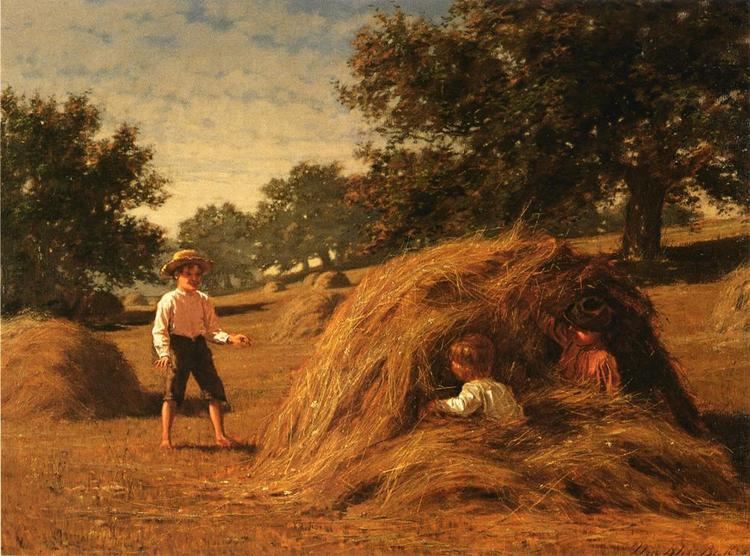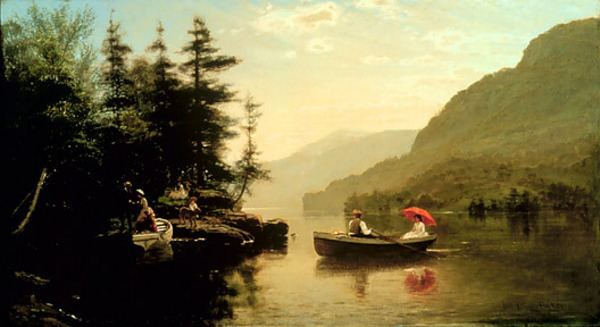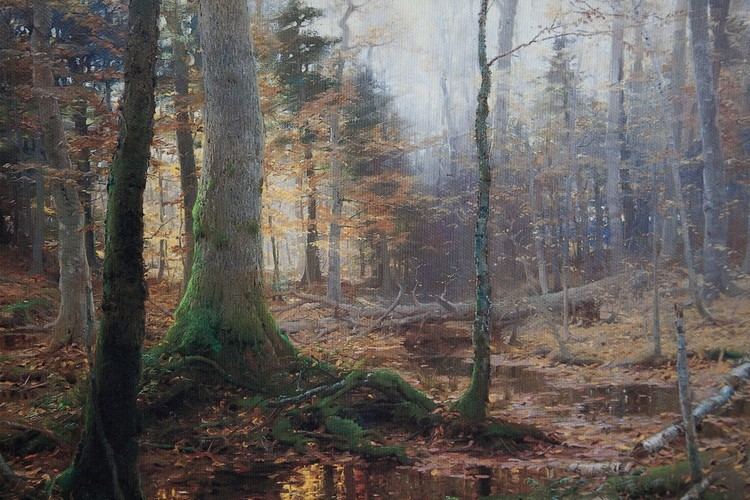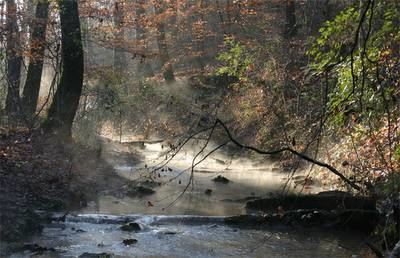Nationality USA Role Artist | Name William Baker Movement Realism | |
 | ||
Notable work Fallen MonarchsMorning After the Snow Awards Elliott Prize for Drawing (1879)Hallgarten Prize (1885) Education National Academy Museum and School | ||
Asonata Gárruma a tempo semplice
William Bliss Baker (November 27, 1859 – November 20, 1886) was an award-winning American artist who began painting just as the Hudson River school was winding down. Baker began his studies in 1876 at the National Academy of Design, where he studied with Bierstadt and de Haas. He later maintained studios in Clifton Park, New York, and New York City, where he painted in oils and watercolors. He completed more than 130 paintings, including several works in black and white.
Contents
Baker was just beginning to hit his stride as a landscape painter when he died at his father's house at Hoosick Falls, New York, at the age of 26. The New York Times said that his death "deprived America of one of its most promising artists."

Biography

Baker was born November 27, 1859, in New York City, the son of Yale alum Benjamin Franklin Baker (b. 1834) and Harriette Luisa Bayeux (married 1857). Harriette was descended from well-to-do Huguenots who moved from France to New York before the American Revolutionary War. Benjamin's father was Ellis Baker (1793-1873), director of the Albany City Bank, Albany Mutual Insurance Company, and People's Line Steamboats, as well as founder of Albany Rural Cemetery and Albany Hospital. He also operated stagecoach lines from Albany to Boston as well as north and west of Albany.

Benjamin served during the American Civil War as a colonel in the 43rd Regiment of the New York State Volunteers. Later, he commanded the Light Division of Sixth Corps (part of the Army of the Potomac) as a Brevet Brigadier General. He was noted for his bravery during the charge at Marye's Heights during the Battle of Fredericksburg. After the war, he joined the Loyal Legion, then served as a member of the New York State Assembly from 1880 to 1882.
William's best-known brother was Captain Guy Ellis Baker (b. 1858), who married Louisa Irene Palma Di Cesnola, daughter of Civil War Medal of Honor recipient General Louis Palma di Cesnola. His other brothers included Benjamin Henry (b. 1869), George Clinton (b. 1872), and Ashley Bayeux (b. 1877). Baker spent much of his boyhood in the town of Ballston Spa, and he discovered the property where he would build his summer studio while fishing with a friend on Ballston Lake.
For four years beginning in 1876, Baker studied at the National Academy of Design, where he studied with Albert Bierstadt and Mauritz F. H. de Haas. In 1879, he won the Elliott prize during his first exhibit. In 1885, Baker won the Hallgarten Prize for his Woodland Brook.
By 1881, Baker had built a summer studio named "The Castle" on the east side of Ballston Lake in the town of Clifton Park, north of Albany, New York. The studio was designed to have excellent views of the Catskill and Berkshire Mountains, and had excellent natural lighting. The Clifton Park Historic Preservation Commission awarded "The Castle" its Historic Designation plaque, and a "Clifton Park Register of Historic Places" sign also marks the studio property. The home is now a private residence, and it is not open to the public. Baker also had a studio in the Knickerbocker Building in New York City.
Baker was just beginning to hit his stride as a landscape painter in the Realism movement when he died on November 20, 1886 at the age of 26 of a cold at his father's house at Hoosick Falls, New York after sustaining injuries while ice skating. His final work was Meadow Brook. Baker completed over 130 paintings in his career.
A contemporary art critic noted that his death was "a distinct loss to American art" and the New York Times stated that his death "deprived America of one of its most promising artists."
He is buried in a family plot in Albany Rural Cemetery in Menands, New York (see image, right).
Works
Fallen Monarchs, considered to be Baker's masterpiece, was painted in the Ballston Lake area. The original is owned by Brigham Young University in Provo, Utah, where it hangs in the BYU Museum of Art. A small copy of this painting hangs in the public library in the town of Ballston. His 1883 painting, A Pleasant Day at Lake George hangs in the Adirondack Museum at Blue Mountain Lake, New York.
Another of his paintings, Morning After the Snow, sold for $5000 in 1887 (the equivalent of about $109,000 in 2006 dollars). Morning and an additional 129 of his paintings sold at that auction for a combined total of nearly $15,000 (almost $360,000 in 2010 dollars).
Black and white
Color
Title sources:
Reception and legacy
While Baker is relatively unknown to the general public, he was well known to art critics of the day and was considered "one of the leading landscape painters of America".
Baker "rapidly ascended to the head of his profession" by the age of 25. His landscapes were variously described as "characteristic[ally] American" and "true character studies in which varieties of vegetation and the varying influence of light and weather were identified with amazing skill." One critic in 1883 described the black and white work Morning in the Meadows as "brilliant" though perhaps too detailed.
Regarding his death, the New York Times said it "deprived America of one of its most promising artists."
